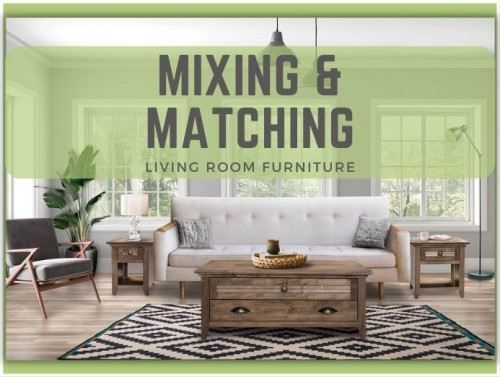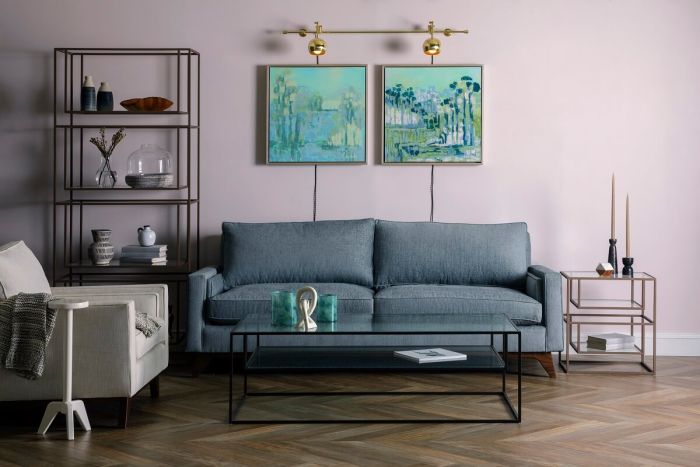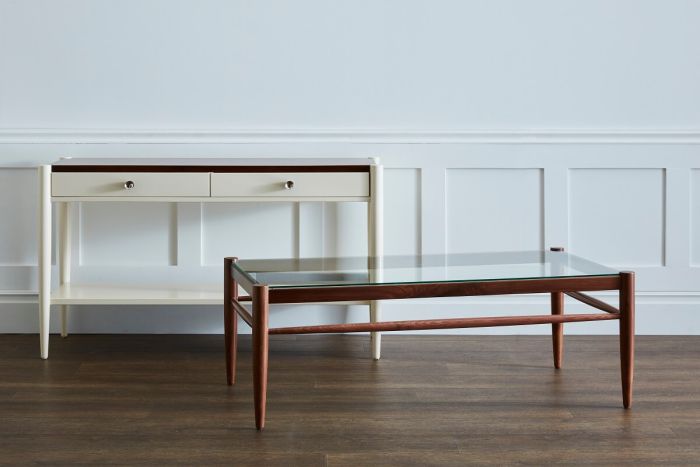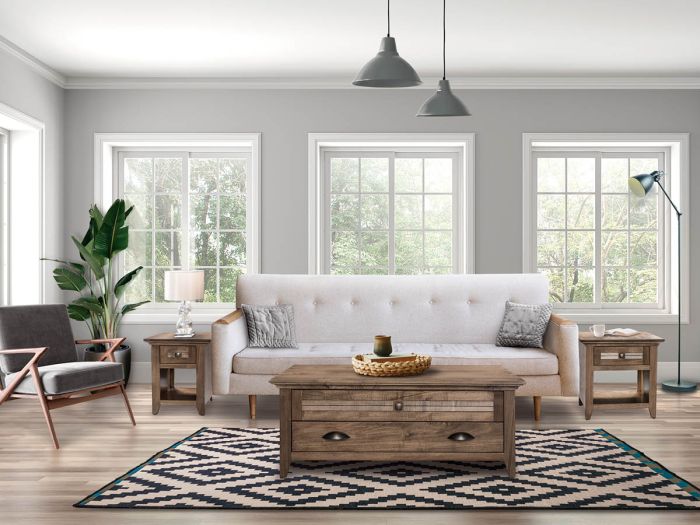Tips for Mixing and Matching Living Room Furniture
By Bailiegh Basham · January 23, 2023
There are a lot of benefits that come with mixing and matching your living room furniture, starting with the fact that it enables you to easily integrate old pieces with the new. What’s more, it makes the room's look feel unique and modern. Execute it correctly, and the living room aesthetic has personality and depth. You can mix light and dark woods, play with different fabric patterns, and tell a story with carefully blended decor themes.
Miss the mark, and your mixed living room furniture comes across as an accidental visual eyesore. This guide can provide guardrails to help you express your personality while nurturing a complementary look.
Only Mix When You Want To, Not When Your Hand is Forced
Let’s say you need a new rocking chair; it’d be silly to buy an entirely new living room furniture set to avoid mixing furniture styles. Because Countryside Amish Furniture offers custom pieces, you can order coordinating living room additions. Remember:
- We can match the desired wood stain - send us a physical piece or a picture of your current living room, and we can recommend an extremely similar finish for your new purchase. Alternatively, we can send you samples for you to view in your living room, holding it up to your existing furniture set.
- Look for furniture with similar elements or design themes - For instance, if your existing coffee table has cabriole table legs, consider purchasing a curio cabinet with the same.
Our point? You can mix living room furniture when you want and not simply because you need to replace a piece.
Think About the End Result and Work Backwards
We’re not asking you to envision specific furniture pieces or the precise layout. Instead, think about a feeling. Do you want the mixture of living room furniture and accessories to spur creativity? Put you in a relaxing mood? Convey sophistication? Make visitors feel right at home? Whatever you choose, the living room’s desired effect will influence guiding color schemes, decor themes, and the types of furniture you choose to mix.
Based on the emotion you want your living room to convey, think about the decor theme that delivers such a feeling. There is no objective truth—while some may feel modern decor is fun and fresh, others may find it cold and alienating.
Nonetheless, it’s important that you pick your underlying decor theme, as it will serve as the boundaries in which you can mix living room furniture.

If Creating a Hybrid-Theme, Limit Design Influences to Two
Some of the most beloved decor themes come from merging two other style influences, such as Rustic Elegance, Modern Farmhouse, Industrial Chic, or Bohemian Mid-Century. That being said, all of these styles stick to only two influences, and we suggest you do the same when mixing and matching living room furniture.
Infuse the influences evenly throughout your furniture and accessories - For the room to feel cohesive and purposeful, the two decor themes should directly interact with one another rather than have separate “moments.” For example, you may place a Mid-Century couch on top of a bohemian rug, position an antique chandelier over an industrial-inspired coffee table or display a piece of modern art on top of a Queen Anne end table.
Pick a Guiding Color Scheme to Echo Throughout Your Pieces
When it comes to mixing your living room’s colors, the options are seemingly limitless. Find inspiration in your favorite furniture pieces, social media browsing, favorite travel destinations, or anywhere else your heart desires.
Each color conveys a mood that you can leverage as a tool - Some of the most popular color combinations feature underlying emotions that balance each other out. Purple evokes a sense of whimsy and fantasy, while brown feels down-to-earth and natural. Blue is subdued and calming while pink is soft yet energetic.
Also important to note is that different shades and tints carry different undertones. Revisiting the example of purple, a pastel tint may be fitting for the softness of French Country while a darker, saturated version will be inherently more mature and modern.
So how should you use this knowledge? Choose three to five colors to mix within your living room furniture and decor, preferably those of equal intensities. Remember, this number should include natural materials.
Strategically Mix Your Living Room’s Woods and Stains
We recommend you read To Mix & Match: A Guide to Choosing Wood Stains That Go Together. However, to highlight the key takeaways:
- Factor in the wood’s warm, neutral, or cool undertones and stay consistent when mixing new living room furniture.
- Stay consistent with the grains - living room furniture with fine grains should be mixed with similar pieces, and the same rule should apply to pieces with larger grains.
- Always request stain samples (even if you choose to mix rather than match) so you can see how the specific wood would look under your living room’s light and in comparison to the other pieces.

Mixing Patterns Within Your Living Room Furniture and Decor
Wood stains may not be the only element you mix within your living room’s look. Patterns also play a key role, whether it be on your curtains, rug, pottery, or furniture’s upholstery. To do successfully:
- Seek out varying sizes, tightness, and shapes - Imagine a rug with large geometric shapes with an ottoman on top decorated with tiny polka dots. Now imagine the same two pieces (the rug and ottoman) but both have different versions of dots. For most people, the second visual could induce a headache! Therefore, seek patterns that contrast one another rather than are too similar.
- Delineate which element is your chosen accent - An accent piece is an item that pops forward from the room, whether due to the color choice or an eye-catching pattern. If you have too many furniture additions or accessories with bold patterns, they’ll compete with one another.
- Echo the colors and/or shapes throughout the living room - Consider tying in patterns into the decor by having it replicate the specific tints and shades of the surrounding color scheme. Similarly, shapes can be a great way to nurture cohesion. For example, let’s say you have an upholstered chair with polka dots; a round mirror mounted on the wall behind the couch can subconsciously connect the two elements. For more ideas, read How to Mix and Match Sofas and Chairs Like a Pro.
- Maintain a balanced aesthetic throughout the space - In most cases, you don’t want the left side of the living room to appear visually busy while the right side is comparatively bare. Therefore, semi-evenly distribute eye-catching patterns throughout the space rather than clumping them all together.
Mix and Match Living Room Furniture With Countryside Amish Furniture
We’re here to help, whether you want a sounding board for design ideas, for us to find pieces similar to what you view in a magazine, or simply have questions about the ordering process.
What’s more, we offer thousands of designs hailing from a variety of different influences, from Queen Anne to Mission style to French Country, giving you the power to mix and match your living room furniture just how you’d like.
Better yet, all of our pieces are crafted by genuine Amish woodworkers based on your requested specifications. Choose the hardwood and stain, as well as potentially the size, hardware, upholstery type, fabric color, and more.


